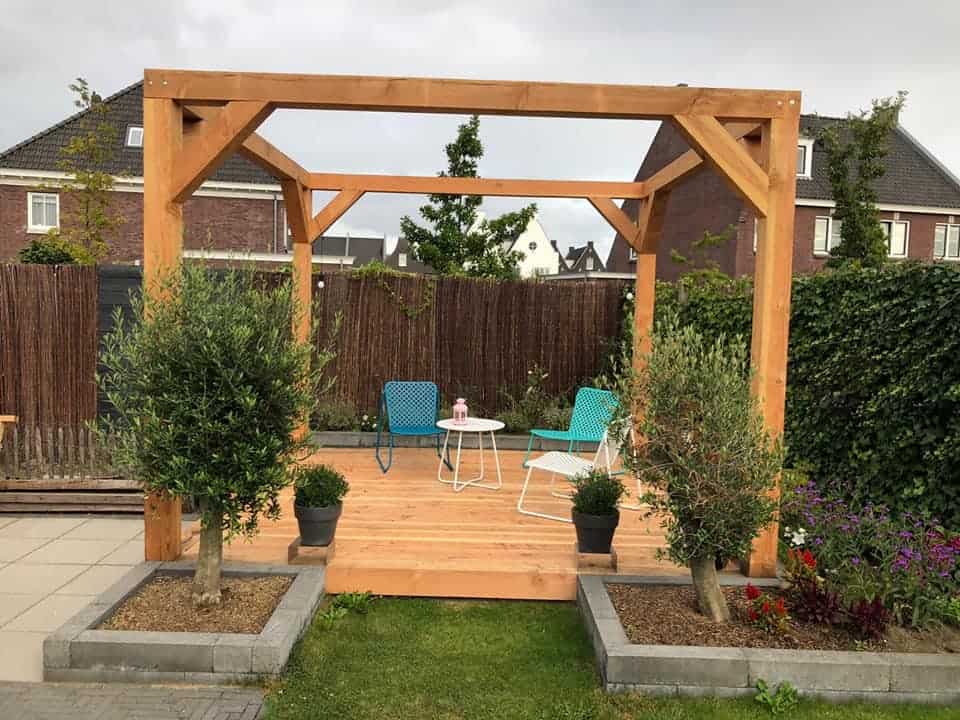With the summer fast approaching, now is the time when most of us are looking at our gardens and deciding how to make the best use of them. A well-designed garden not only gives you a beautiful view from your house but also can create a whole extra room. This for us in the UK, where a lot of us are a bit strapped for space, can be a real incentive to make it as usable as possible.
One way to do this is to add a pergola to your outdoor space. With a pergola in the garden, you get an extra room where you can eat, have coffee, socialise and enjoy the summer. The construction of a pergola gives your garden a lift and creates an extra lush room. But what exactly is a pergola and what should you think about if you are going to build one?
WHAT IS A PERGOLA?
Pergola is a historic structure that actually dates back to 1400 BC in Egypt. The word pergola is Italian and means colonnade or leaf hall. They usually are made up of four corner posts and topped with cross beams and lattices. Traditionally these are built from wood, but more recently there has been more experimentation with vinyl and in some cases aluminum.
A pergola is a perfect frame for climbing plants, which then gives beautiful and green surroundings while providing shelter and shade. It is also possible to stretch a canvas as a roof to protect yourself against bad weather, and offer more shelter.
Why have a pergola?
- Pergolas create versatile natural shade.
- Pergolas are cost-effective even with quality materials.
- They are easy to put up yourself once the foundation is put down.
- They are very durable.
- They create a beautiful design feature, perfect for highlighting plants.
CHOOSING THE RIGHT MATERIALS
Once you have planned and measured where you want your pergola, it is time to choose the materials. Most people go with durable wood material, and since the wooden construction is permanent, you should choose pressure-impregnated wood, such as pine. While being the most cost-effective option, it is also insect and rot repellent. Then maintenance will become easier and you won’t have to disturb your climbing plants to treat the wood.
It’s a good idea to decide if you would like to put a roof on your pergola, as this will also impact your choice of wood. It should hold both the weight of the roof and any additional rain or snowfall. To ensure your pergola is securely attached to the ground requires strong foundations. Stop Digging ground screws are the perfect foundation for pergolas, as they don’t require any digging to install. With no digging or setting time required (unlike concrete), the non-invasive foundations ensure that the structure is secure. See some examples of our previous pergola work here.
Many prefer to let the climbing plants grow and form a natural and lush roof. This adds colour and beauty to your pergola, and also in most cases a beautiful scent.
Some great plants to use with your pergola are:
- Growing roses
- Wisteria
- Honeysuckle
LOCATION OF PERGOLA
The pergola can be placed in lots of different areas in the garden to create different looks. By combining with a windbreak, it is possible, for example, to create a lush and cosy leafy room. The most common, however, is to place the pergola as an extension of the house. This creates a protected terrace, perfect for entertaining. If you have included plants, a southern location is excellent and your plants will thank you.
If you would like more information on how Stop Digging ground screws can help you get the most from your garden this year, and use them for a beautiful feature pergola, please feel free to get in contact with us at: SALES@STOPDIGGING.CO.UK or 020 3970 3979





